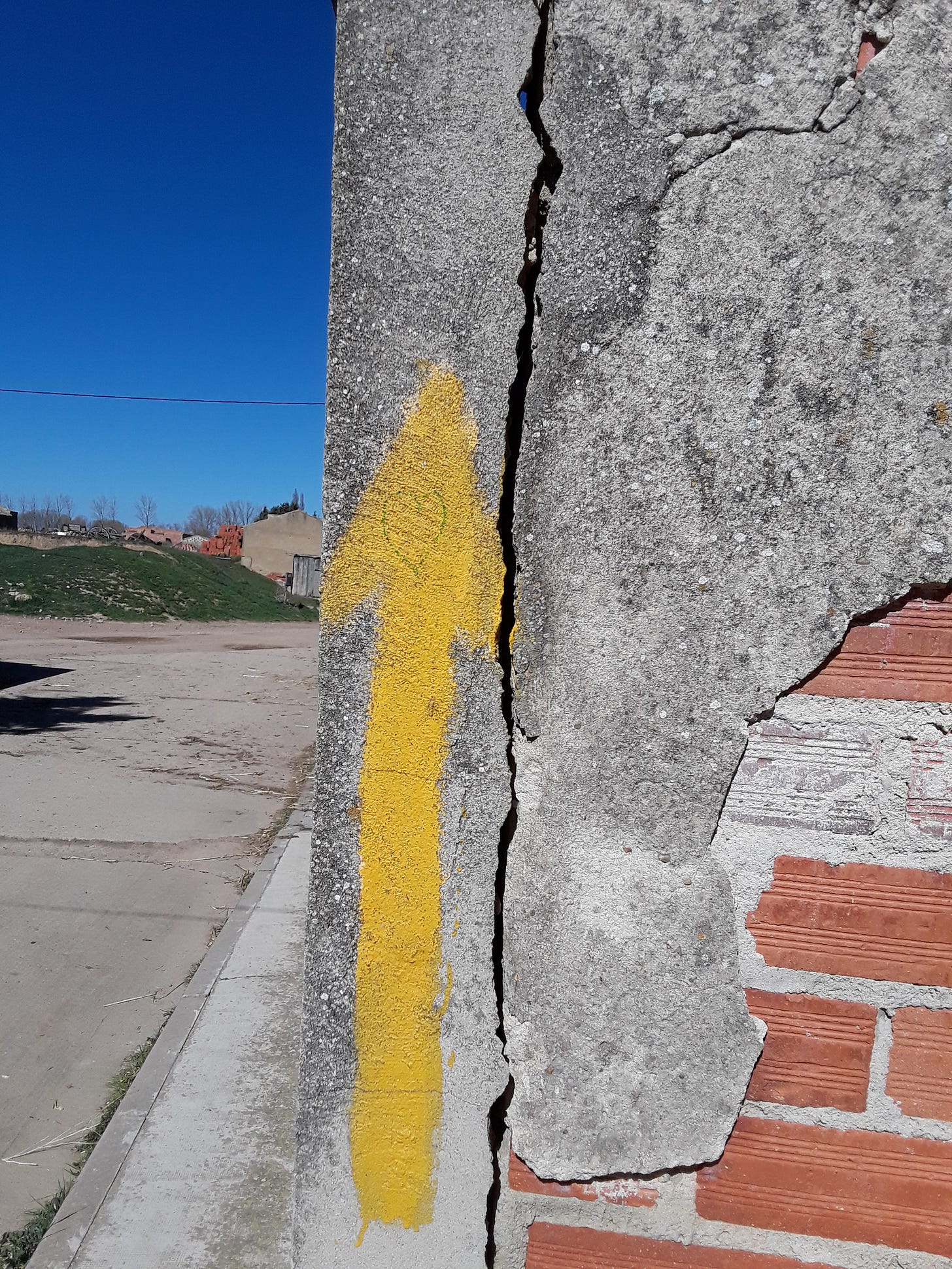Making a pilgrimage
In making a pilgrimage, there is both an outer journey and, if we are open to it, an inner journey. As the mystic Thomas Merton put it, you can have one without the other, but it is best to have both.
I plan to walk the Portuguese Camino in October. I bought my plane tickets, and I’m fired up and ready to go…except that I have to sit around for the next three months thinking about it.
Well, not exactly “sit around.” I will have to train, for example.
I’ll be walking for 12 days and averaging between 12 and 15 miles per day. So, yes, I will need to do some walking before I go. When I walked the Camino Frances in 2019, I averaged more than 17 miles per day over a much longer distance, but I was younger then and didn’t know what I was getting myself into. I do now.
The Camino is a network of pilgrimage routes leading to a cathedral in northwest Spain (where the remains of Saint James the Greater, apostle of Jesus, are said to be buried). People have been walking the various paths to Santiago de Compostela for more than a thousand years. During the medieval period, it was one of the three most popular pilgrimage destinations, in addition to Jerusalem and Rome. An infrastructure of villages, hospitals, and hostels grew to support the Camino pilgrims.
After the medieval period, however, interest in the Camino (and pilgrimage in general) declined. A large part of the reason was the Reformation. Martin Luther, for example, had no use for pilgrimage. With typical bluntness, he said, “All pilgrimages should be stopped. There is no good in them: no commandment enjoins them; no obedience attaches to them.” And so, most pilgrimage activity ceased in Protestant areas of Europe.
But the Camino has improbably made a comeback, and today the various paths in Spain are typically crowded, especially in the summer, when pilgrims compete for limited beds at pilgrim hostels (or albergues). Books and articles have been written about the Camino, and that has certainly contributed to the renewed interest. Plus, the 2010 movie called The Way, starring Martin Sheen (directed by his son Emilio Estevez), has undoubtedly had an impact as well.
My own interest in the Camino was piqued by a seminary classmate who went to Spain each summer and walked various stages of the Camino Frances. He has returned to Spain (and Portugal) so many times that he became a board member for the American Pilgrims on the Camino. Like many people, I had to wait until I retired to walk my first Camino. The Camino Frances, the most popular route, is 500 miles long. I completed it in 28 days. When I finished, I still had a couple of days before my return flight, so I continued on to the Spanish fishing village known as Finisterre where I dipped my toe in the Atlantic Ocean (and had a seafood lunch).
Some pilgrims, especially those who have jobs to get back to, start much closer to Santiago de Compostela. If you walk 100km (62 miles), you get the same certificate at the end that I did. I started in Saint Jean Pied de Port, a lovely medieval village on the French side of the Pyrenees. I have no regrets about having walked the longer distance. It was an experience I will never forget.
Today, curiously, most pilgrims report that they are not particularly religious. One pilgrim wanted me to know that for him “this is not some sort of Catholic thing.” Still, the Camino is clearly religious in origin and continues to use religious signs and symbols. Even though I could understand little of what was being said, I went most nights to village churches along the way for the pilgrim mass. But it’s true that the pilgrims I met were not religious and certainly not churchgoers.
So, why do so many walk an ancient pilgrimage path? I have a guess. I think there is within all of us a longing for … well, that’s just it, isn’t it? Most of us don’t have the language to describe it. C.S. Lewis once called it “an inconsolable longing” in the human heart “for we know not what.” Lewis knew—and I know too—that this longing, which seems to be universal, is for the sacred, the holy, a dimension to life that often seems just out of reach. But it is there. We can sense that it is.
When a pilgrim walks the Camino, no matter the route, there is both an outer journey and, if we are open to it, an inner journey. In walking and in meeting pilgrims from all over the world, I find a dimension that is often missing in my life. I long for it, and I can’t wait to get back.
And of course walking through Portugal should be interesting too.
Photos: (top) Without those yellow arrows along the way, I would never have made it to Santiago de Compostela. (next) The Meseta Central is a vast plateau in central Spain, and most days look just like this. (third from top) Most, but not all, pilgrims stay in pilgrim hostels or albergues that look much like this one in Samos. (Snoring at night can be a problem.) (bottom) My Camino family included people from all over the world. Shown here are fellow pilgrims from Estonia, South Africa, and Korea. The young woman from Estonia had cerebral palsy and, I noticed, spent considerable time in the evening stretching. (below) Those are the various pilgrimage routes leading to Santiago de Compostela.









This is exciting news. I, too, would love to embark on a pilgrimage once my children are older. Can't wait to hear about how the journey went! 😁
Pastor Doug.
Walking the Paths of Wisdom, an amazing grace for wise pilgrims!